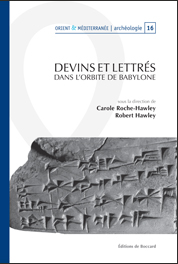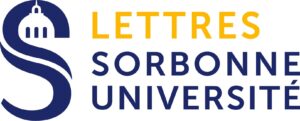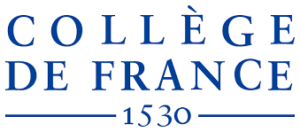Devins et lettrés dans l’orbite de Babylone

sous la direction de Carole ROCHE et Robert HAWLEY
Dans le premier volume (paru en 2012), les auteurs s’étaient concentrés sur l’étude des scribes et érudits qui avaient produit ces textes « périphériques » caractéristiques de l’âge du Bronze récent (1600-1200 av. J.-C)._ Dans ce second volume, en plus de la poursuite de l’étude de certains scribes et de pratiques scribales locales, ce sont les devins et autres lettrés plus spécialisés qui ont retenu l’attention. Ces disciplines savantes révèlent de façon claire la transmission des traditions cunéiformes en Syrie et en Anatolie, mais elles illustrent aussi des liens subtils entre les usages « d’origine » et les adaptations locales, entre les continuités avec le passé et les innovations et évolutions en contexte étranger… À travers l’étude de textes de la tradition babylonienne copiés hors de Babylonie, qu’ils soient scolaires, littéraires ou divinatoires, certaines contributions se sont intéressées aux chemins que ces textes ont empruntés et aux relais ayant fonctionné. D’autres études ont quant à elles poursuivi l’examen de l’adaptation de la langue babylonienne et de l’écriture cunéiforme mésopotamienne dans ces zones « périphériques », notamment à travers le décalage entre l’apprentissage et l’usage de ces outils : à Ougarit, par exemple, on assiste aussi à la constitution d’un savoir local écrit avec l’alphabet suivant un modèle babylonien, ou encore au jeu de la mise au point d’un vocabulaire technique pris entre langues de prestige, langues d’origine et langues locales.
This is the second volume of publications devoted to research accomplished within the framework of the “Mespériph” project (“Mesopotamia and its periphery: transmission and adaptations of a culture in the Late Bronze Age”, funded by the French Agence nationale de la recherche 2007-2011).In the first volume (published in 2012), the authors concentrated on the study of the scribes and intellectuals who had produced some of these “peripheral” texts characteristic of the Late Bronze Age (1600-1200 BC). In this second volume, in addition to pursuing the study of certain scribes and local scribal practices, it is diviners and other kinds of specialized scholars that have retained the attention of the contributors. Such learned disciplines not only provide a particularly revealing vantage point for the study of the transmission of cuneiform tradition in Syria and Anatolia, but also illustrate the subtle relationship between “original” usages and local peripheral adaptations, between continuity with the past and innovation and evolution in a foreign setting. Through the study of these Babylonian scholarly texts copied outside of Babylonia, be they scribal exercises, literary texts or divination manuals, some contributions to this volume focus on the paths followed by these texts over the course of their transmission and on the various scribal centers through which they passed. Others trace the adaptation of the Babylonian language and Mesopotamian cuneiform writing system in these so-called “peripheral” zones, highlighting the gap between learning and actually using this scholarly knowledge at Ugarit, for example, where Babylonian textual models also served as inspiration for the constitution of a local written “cultural repertoire” in alphabetic script, or shedding light on the complexities involved in the evolution of technical vocabulary, in a dynamic between linguistic prestige and vernacular or dialectal realities.




